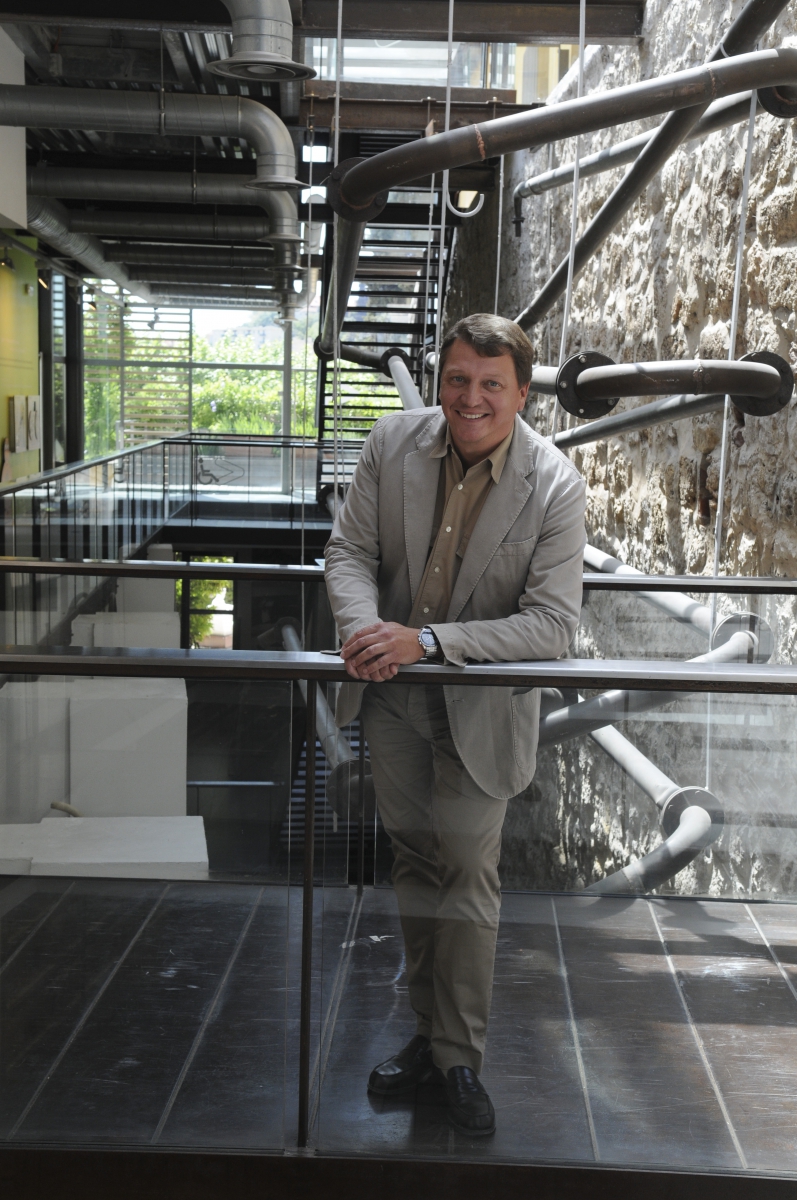Musée International de la Parfumerie
The one and only museum in France dedicated to the universe of the Perfume, the International Museum of the Perfume and its gardens, the collections of the museum, through the materiality of the presented objects propose to the visitors a speech turned to the very important immaterial part which represents the perfume in all the human civilizations since the beginning of mankind. Beyond a historic evocation, the museum and its gardens are more specifically focuse to the immaterial inheritance which constitutes the perfume in Grasse. Our first showroom presents the manufacturing process of the perfume through the Men who participate in it: the farmer, the chemist, the perfumer, the designer then the marketing man.
All along we offer multi média tools (videos, flavors and smells to be felt,…) which immerse visitors into the immateriality of the flavor within the various human civilizations. The many discussions between the staff of the museum and the current actors of the industry and the art of the flavor essentially in the country of Grasse allow us to propose conferences and temporary exhibitions where materiality of collections and the immaterial heritage which represents the flavor is constantly present.
The creation of the Gardens of the Musée International de la Parfumerie (MIP) and the redesign of the permanent exhibition in the MIP
Description of the project / practice / program
For the Garden, it is a question at the same time of developing a botanical garden dedicated to the aromatic plants but also of presenting the field culture of the symbolic flowers of the region of Grasset and the neighborhoods: Pink Centifolia, tuberoses, jasmine, violets, orange flowe, lavender, lavender ... it on a vast enough surface to recreate a field where it is possible to pick flowers and to realize simple extractions.
For the museum, the perfume is a huge universe which it is difficult to understand without the help of specific tools of mediation. Naturally the presence of plants, the natural raw material, but also of numerous smells, natural and synthetic without forgetting the former and forgotten flavors are omnipresent all along the itinerary. It immerse the visitor into a scenography where, surrounded with objects, the notion of immateriality of the perfume, the memory of the People having participated in its creation, appear equally with flasks, with applied and décorative art and with industrial equipment.
How were practitioners of intangible cultural heritage involved?
These two projects were led in coordination and in cooperation with the professional actors of the agriculture and the industry of the perfume. For the Gardens, it is a question of preserving and of enriching our knowledge of the culture of the aromatic plants in association with farmers' associations of the region, the professionals local schools (Antibes in particular) but also of preserving in reduction the fields of symbolic flowers of Grasse, Centifolia roses, tuberoses, jasmine, violets, orange flowers, on approximately two hectares.
For the museum the new museography is realized with the help and the support of the professionals of the sector, the local companies (Expressions Parfumées, Payan Bertran) and the international one(Mane, Robertet, Firmenich, IFF, the Occitan.) but also with perfumers working in Grasset (independent perfumers, J. Cavalier (Louis Vuitton), J.-C. Ellena (Hermes), F. Demachy (C. Dior)) and finally with the University (X. Fernandez, director(manager) of the chemist flavor MASTER of the university of Nice).
These participations to the projects join everyday exchanges with institutional structures or more informal contexts to elaborate our programs of mediation towards all the public.
Credits cover photo: Carlo Barbiero, Jardins du MIP, Grasse-France
CV of the author

After studies of engineer and a first career in the private sector, Olivier Quiquempois obtained a bachelor and a masters degree in Art History, and a diploma of museology of the École du Louvre in Paris. Laureate of the Institut National du Patrimoine in 2010, he worked as curator in the Musée des Augustins in Toulouse and then as director curator of the Musée Atelier départemental du Verre of the département du Nord. Today Quiquempois is director-curator of the Museums of Grasse and of the Gardens of the Musée International du Parfum in Mouans-Sartoux in the South of France.
LESSONS LEARNT
- The notion of mediation is essential. It is simple to deal within the framework of a human mediation but the consideration of the individual free visit public asks for a real reflection on tools proposed within the itinerary. In our case it is the olfactive experiences and experiments which we put forward.
- The scenography in general also has to take into account the speech related to the legacy of the immateriality. It is not any more a question of highlighting the objects as masterpieces which are self-sufficient in themself and bringing an implicit answer but to offer an experience of multisensory visit associating objects between them and with various human testimonies.
Practical
When
25 February 2019 from 15:04 to 15:04
Where
Subscriptions
It is no longer possible to subscribe to this bestpractice. Reports and videos will be published after the bestpractice.